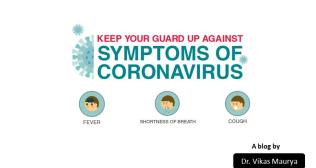
Silicosis Explained: Symptoms, Causes, and Effective Management
Every day, in countless demanding jobs, people work with the very materials that build our world: stone, sand, and concrete. There is a deep pride in this work, but also a hidden danger that often goes unnoticed for years. It’s not a sudden injury, but a silent threat that settles deep within the lungs, particle by particle. This threat has a name: silicosis, a relentless and irreversible lung condition that can permanently alter a person's ability to simply breathe.
For anyone whose work brings them into contact with dust, or for families who want to understand the risks their loved ones face, this guide is a crucial starting point. We will explore what silicosis truly is, where it comes from, the vital warning signs to recognize, and the most effective ways to manage it today.
What Is Silicosis Disease?
Silicosis is a long-term, progressive lung disease caused by inhaling tiny particles of crystalline silica, a common mineral found in sand, rock, and granite. When these materials are cut or ground, they release a fine dust that can be inhaled deep into the lungs' air sacs. The body’s immune system recognizes these particles as foreign but cannot remove them.
This triggers a continuous inflammatory attack that leads to the formation of hard, fibrous scar tissue (fibrosis). These nodules of scar tissue stiffen the lungs, reducing their elasticity and severely impairing their ability to transfer oxygen into the bloodstream. This debilitating condition is a clear answer to the question of what is silicosis disease; it is a permanent, progressive silica dust disease that worsens even after exposure stops.
Identifying the Causes of Silicosis
The single, direct cause of this lung disease is inhaling respirable crystalline silica dust. The risk comes from cumulative exposure over months or years, with severity depending on dust concentration and duration. Understanding the primary silicosis causes means identifying high-risk occupations where dust is a constant byproduct of the work.
Certain occupations carry a significantly higher risk, including:
- Construction and Demolition: Cutting, drilling, or demolishing concrete, masonry, or rock.
- Mining, Quarrying, and Tunneling: Extracting and processing stone and minerals.
- Stone Countertop Fabrication: A modern high-risk field, especially when cutting and polishing engineered stone, which contains a high percentage of silica.
- Sandblasting and Abrasive Blasting: Using silica sand to clean surfaces creates a dense cloud of fine particles.
- Glass and Ceramics Manufacturing: Handling raw materials containing silica.
- Foundry Work: Handling sand-casting molds and shakeout processes.
There are three main types of silicosis, based on exposure intensity:
- Chronic Silicosis: The most common form, developing after 10 or more years of exposure to lower dust concentrations. Lung damage progresses slowly.
- Accelerated Silicosis: Develops faster, typically within 5-10 years, from exposure to higher dust concentrations.
- Acute Silicosis: A rare, severe form resulting from short-term exposure to extremely high dust levels, causing the lungs to fill with fluid.
Recognizing the Symptoms of Silicosis
A dangerous aspect of this disease is its gradual onset. In the early stages of chronic silicosis, a person may have no noticeable symptoms. As lung scarring progresses, however, the signs become more debilitating. Awareness of early silicosis symptoms is crucial for timely medical help.
Common initial symptoms include:
- A persistent, nagging cough that may be dry or produce phlegm.
- Shortness of breath (dyspnea), especially during physical exertion.
- A general feeling of weakness and unexplained fatigue.
- Chest pain or a feeling of tightness.
As the disease advances, these silicosis symptoms can become much more severe:
- Extreme shortness of breath, making simple activities difficult.
- Recurring fever and drenching night sweats.
- Unexplained weight loss and loss of appetite.
- Swelling in the legs (edema).
- A bluish tint to the skin (cyanosis) from a lack of oxygen.
The lung damage also weakens the body's defenses, making individuals more susceptible to other serious health problems like tuberculosis (TB), lung cancer, kidney disease, and COPD.
Diagnosis and Effective Management of Silicosis
Since there is no cure, medical care focuses on diagnosis, slowing the disease's progression, and managing symptoms. The diagnostic process is thorough and relies heavily on a patient's occupational history.
Diagnosis typically involves:
- Detailed Work History: A doctor will ask extensively about your job history to identify potential silica dust exposure.
- Physical Examination: Listening to the lungs and checking for other physical signs.
- Imaging Tests: A chest X-ray is the primary tool used to detect lung scarring. A high-resolution CT scan can provide more detailed images.
- Lung Function Tests (Spirometry): These tests measure breathing capacity and how efficiently your lungs deliver oxygen.
Once confirmed, a comprehensive silicosis treatment plan is developed. No treatment can reverse the lung scarring; instead, management aims to prevent further damage and alleviate symptoms.
Effective silicosis treatment and management includes:
- Immediate Cessation of Exposure: This is the most critical step. All further exposure to silica dust must be stopped to prevent the disease from worsening.
- Medications: While no drug can cure the fibrosis, certain medications help manage symptoms. Bronchodilators open airways, while antibiotics treat associated respiratory infections.
- Oxygen Therapy: For those with low blood oxygen levels, supplemental oxygen can reduce breathlessness and improve mobility.
- Pulmonary Rehabilitation: This program includes specialized breathing exercises, nutritional counseling, and physical training to help patients manage their symptoms and improve their overall well-being.
- Lung Transplant: In the most severe, end-stage cases where lung function is critically impaired, a lung transplant may be the only viable option.
The Path Forward Is Prevention
While a silicosis diagnosis is life-altering, this disease is entirely preventable. The damage is permanent, but our commitment to protecting workers can make a difference. Prevention starts with awareness and is built on a foundation of strict workplace safety.
This is a shared responsibility, requiring employers to implement dust-control measures like water suppression and proper ventilation, and employees to consistently use protective equipment like N95 respirators. Regular health screenings for at-risk workers can catch signs early, but the ultimate goal is stopping dust at its source.
By understanding what is silicosis disease and championing safer work practices, we can protect countless individuals. The hands that build our world deserve to do so without sacrificing their breath.
Frequently Asked Questions
1. Is silicosis reversible or curable?
No, there is currently no cure for silicosis. The lung scarring (fibrosis) is permanent. Treatment focuses on slowing the disease, managing symptoms, and preventing complications.
2. How quickly can someone develop silicosis?
This varies. Chronic silicosis can take 10-20 years to develop, while accelerated forms appear in 5-10 years. Acute silicosis can occur after only months of intense exposure.
3. Is silicosis contagious?
No, silicosis is not contagious. It is an occupational lung disease caused solely by inhaling crystalline silica dust and cannot be spread from person to person.
4. Can a simple cloth mask prevent silicosis?
No, standard cloth or surgical masks do not provide adequate protection. Workers need properly fitted respirators, like an N95, to filter out fine silica particles.
5. Does silicosis increase the risk of other diseases?
Yes, the lung damage from silicosis significantly increases the risk of developing other serious conditions, most notably tuberculosis (TB), lung cancer, and chronic bronchitis.



















